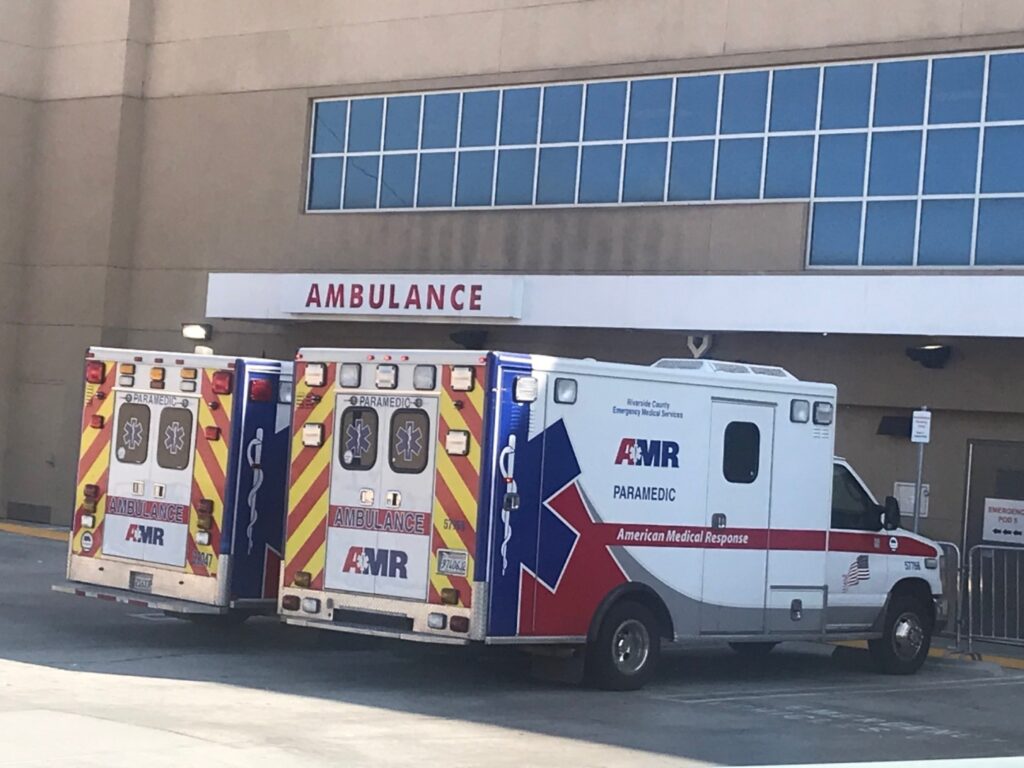
A little-noticed amendment recently approved by the Centers for Medicaid Services for California’s Medicaid plan, Medi-Cal, could cost the state’s taxpayers and patients dramatically. The amendment, 22-0015, raises the reimbursement rate that Medi-Cal will pay for ambulance rides by over $800 per trip. A Medi-Cal patient’s ambulance ride will now cost state taxpayers over $1,000 per trip, up from about $120 per trip.
The increased reimbursement rates in the amendment could result in a revenue windfall for local fire departments that are increasingly looking to provide emergency medical services (EMS)—not so they can better serve patients, but so they can use EMS as a revenue generator. Notably, despite handling over 70% of ambulance rides in California, private ambulance companies aren’t going to receive this higher reimbursement rate because it is only available to public EMS providers.
EMS agencies exist to serve all patients with life-saving services as quickly and effectively as possible, not to charge taxpayers high costs and siphon off the most profitable patients to generate money that can be shifted to other projects.
While Medi-Cal patients may have previously provided less reimbursement than rates paid by some insured patients for their ambulance trips, justifying a ninefold increase in per-trip rate needs clear justification. Yet, proponents and state officials have not provided any data justifying the ambulance ride cost increase.
California’s county-based emergency medical services system has existed since 1981. The state Emergency Medical Services Authority (EMSA) was created after the proliferation of city- and county-based EMS agencies led to jurisdictional conflicts, and a more unified approach to EMS transport was needed. Since then, the county-based EMS system has served Californians well for over four decades, with EMSA providing oversight and many local governments partnering with private ambulance companies.
But, today, fire departments view emergency medical services as a way to get more funding. Earlier this year, Senate Bill 443, which died in the state legislature, would have allowed local fire departments to effectively create their own EMS agencies. But fire departments don’t want oversight from the state’s Emergency Medical Services Authority. And they don’t want to conduct competitive bidding for ambulance subcontracts, where private providers would likely provide better services at lower costs.
Recent experience shows how this unaccountable fire department takeover of EMS happens. For example, in 2019-20, Chula Vista entered an EMS contract with the same company that had provided its ambulance services since the late-1970s. Chula Vista raised rates considerably to nearly $3,900 per ambulance trip. But, the ambulance company providing those services only received $1,720 per trip while the fire district siphoned off over $2,000 per trip. Then, after jacking up ambulance prices, the fire department told city leaders that, rather than hold another competitive bidding process to see what private companies would charge per trip, the fire department should provide all emergency services and keep all of the funding.
Related Articles
Biden’s sneaky censors work to silence free speech
The U.S. economy is being pushed to the brink
How California Democrat Ken Cooley helped boost a Proud Boy
People fleeing Cuba, Nicaragua and Venezuela should be granted immediate amnesty
Why recalling progressive prosecutors is the wrong idea
If municipal fire agencies want to take control of emergency medical services away from cities, counties, and private providers, they should competitively bid for the opportunity to do so alongside other EMS providers. They should also be subject to the same standards and oversight, which they aren’t currently.
Unfortunately, this Medi-Cal amendment raising reimbursement rates to public providers and the previously proposed state legislation, which may return next session, make it look as though fire departments believe they can bully their way into becoming unregulated EMS agencies that charge astronomical prices to taxpayers.
Ambulance services are obviously often a matter of life and death. If lawmakers and regulators believe the state’s system needs improvement, they should publicly and transparently propose EMS changes and judge providers on a level playing field. If fire departments want to displace existing county EMS providers and private ambulance companies, they should be offering taxpayers higher quality services at lower costs. Right now, it appears they’re offering neither.
Austill Stuart is the director of privatization research at Reason Foundation.
